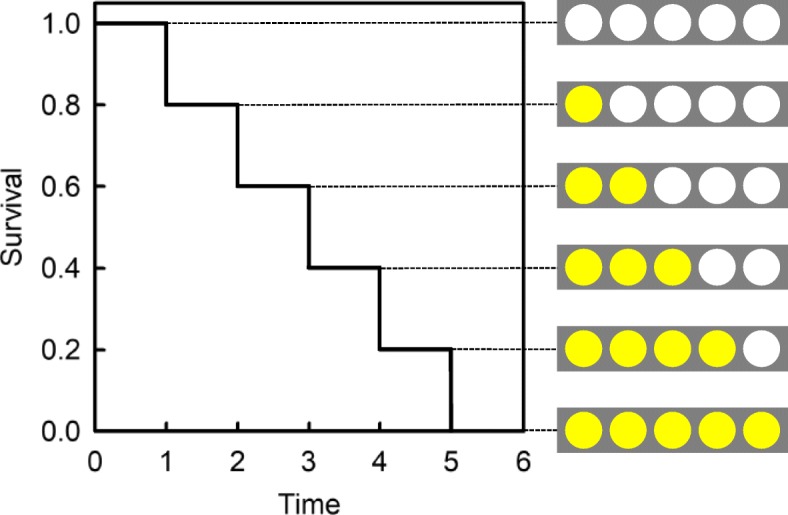Fig. 2.

Kaplan-Meier survival method used to evaluate the duration of the lag phase of Aβ aggregation. The kinetics were analysed by the Kaplan-Meier survival method using the initiation time of amyloid growth kinetics as the event of interest. Aβ(1–40) was incubated with Matrigel-coated Sepharose beads as described in Materials and Methods. The appearance of ThT-reactive aggregates was monitored with a fluorescence microscope. The first time at which ThT-reactive aggregates were detected was set as the initiation time of amyloid growth. When ThT-reactive aggregates are detected in 1 well of 5, the “survival rate” is recorded as having decreased from 1.0 to 0.8. Similarly, if ThT-reactive aggregates are then detected in 1 of the remaining 4 wells, then the “survival rate” is recorded as having decreased from 0.8 to 0.6. Thus, the slower the kinetics of early phase Aβ aggregation, the more time is required to reach a “survival” value of zero. This model was used to evaluate the concentration-dependent effects of apoE and CLU on the kinetics of early phase Aβ aggregation
